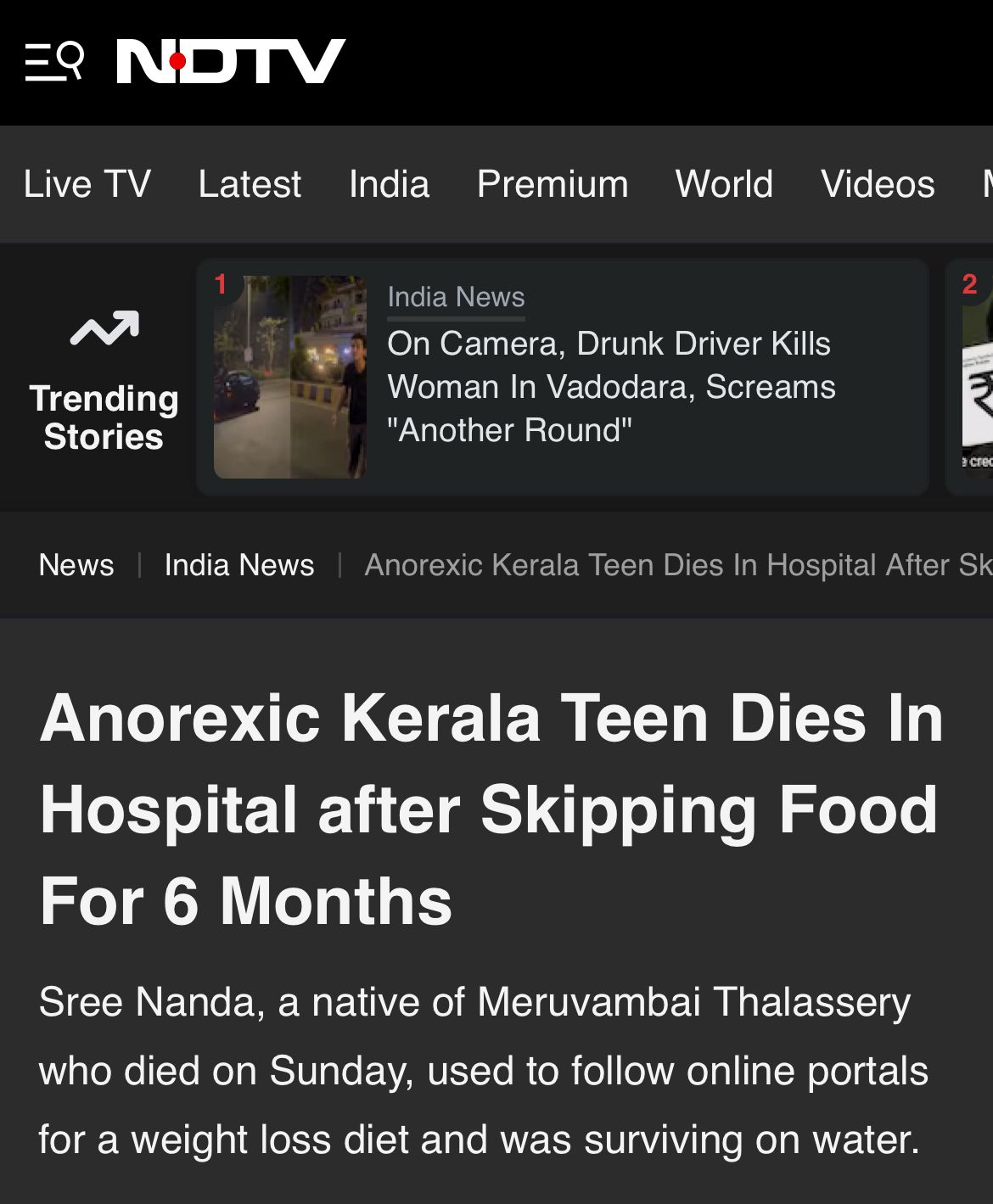What is Anorexia Nervosa

The term anorexia nervous is derived from the Greek term for “loss of appetite” and a latin word implying nervous origin. Anorexia nervosa is a syndrome characterised by by 3 essential criteria –
The first is a self induced starvation to a significant degree – a behaviour.
The second is a relentless drive for thinness or a morbid fear of fatness – a psychopathology.
The third criterion is the presence of medical sign and symptoms resulting from starvation- a physiological symptomatology.
Anorexia nervosa is often but not always associated with disturbance of of body image, perception that one is distressingly large despite obvious medical starvation. The distortion of body image is disturbing when present, but not pathognomic, invariable or required for diagnosis.
Two subtypes of Anorexia nervosa exists – restricting and binge/purge. The theme is all anorexia nervosa subtypes is a highly disproportionate emphasis placed on thinness as a vital source, sometimes the only source, sometimes the only source, of self esteem, with weight, and to a lesser degree, shape, becoming the overriding and consuming daylong preoccupation of thoughts, moods and behaviour. Anorexia nervosa is a severe eating disorder marked by self-induced starvation, an intense fear of weight gain, and medical complications from malnutrition. Despite its name, loss of appetite is uncommon until later stages.
Approx 50% of anorexic people will lose weight by drastically reducing their food intake and the other half will not only diet but will also regularly engage in binge eating followed by purging behaviors.
It’s much more prevalent in females than in males.
The term Anorexia in the name is actually a misnomer as the loss of appetite is usually rare until late in the disorder.
It has two types-
1. Food restricting type – food intake is highly restricted (usually with attempts to consume fewer than 300-500 calories per day and no fat grams)
2. Purging type – person alternate attempts at rigorous dieting with intermittent binge or purge episodes.
DSM-5 Diagnostic Criteria:
A. Restriction of energy intake leading to significantly low body weight relative to age, sex, and development.
B. Intense fear of gaining weight or persistent behavior interfering with weight gain.
C. Disturbance in self-perceived body weight or shape, undue influence on self-evaluation, or failure to recognize the severity of low body weight.
Treatment:
The first goal is to restore nutritional balance, correcting dehydration, starvation, and electrolyte imbalances. Hospitalization is recommended for those below 80% of expected weight and prolonged for those under 70%. Treatment includes:
- Behavioral management
- Psychotherapy (CBT, Dynamic Expressive Supportive Therapy, Family Therapy)
- Family education and therapy
- Psychotropic medications
Anorexia nervosa is driven by an overwhelming preoccupation with thinness, where self-worth is disproportionately tied to weight and shape, often requiring long-term, multidisciplinary intervention.



Comments (0)